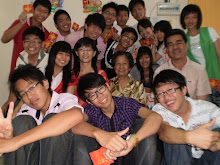An operating system is the software on a computer that manages the way different programs use itshardware, and regulates the ways that a user controls the computer.[1][2] Operating systems are found on almost any device that contains a computer with multiple programs—from cellular phones and video game consoles to supercomputers and web servers. Some popular modern operating systems for personal computers include Microsoft Windows, Mac OS X, and Linux[3] (see also: list of operating systems,comparison of operating systems). Because early computers were often built for only a single task, operating systems did not exist in their proper form until the 1960s.[4] As computers evolved into being devices that could run different programs in succession, programmers began putting libraries of common programs (in the form of computer code) onto the computer in order to avoid duplication and speed up the process. Eventually, computers began being built to automatically switch from one task to the next. The creation of runtime libraries to manage processing and printing speed came next, which evolved into programs that could interpret different types of programming languages into machine code. When personal computers by companies such as Apple Inc., Atari, IBM andAmiga became popular in the 1980s, vendors began adding features such as software scheduling and hardware maintenance. An operating system can be divided into many different parts. One of the most important parts is the kernel, which controls low-level processes that the average user usually cannot see: it controls how memory is read and written, the order in which processes are executed, how information is received and sent by devices like the monitor, keyboard and mouse, and deciding how to interpret information received by networks. The user interface is the part of the operating system that interacts with the computer user directly, allowing them to control and use programs. The user interface may be graphical with icons and a desktop, or textual, with a command line. Another similar feature is an Application programming interface, which is a set of services and code libraries that let applications interact with one another, as well as the operating system itself. Depending on the operating system, many of these components may not be considered an actual part. For example, Windows considers its user interface to be part of the operating system, while many versions of Linux do not.
Wednesday, May 5, 2010
OPERATING SYSTEM
Posted by black noob at 5:55 PM
Subscribe to:
Post Comments (Atom)

0 comments:
Post a Comment